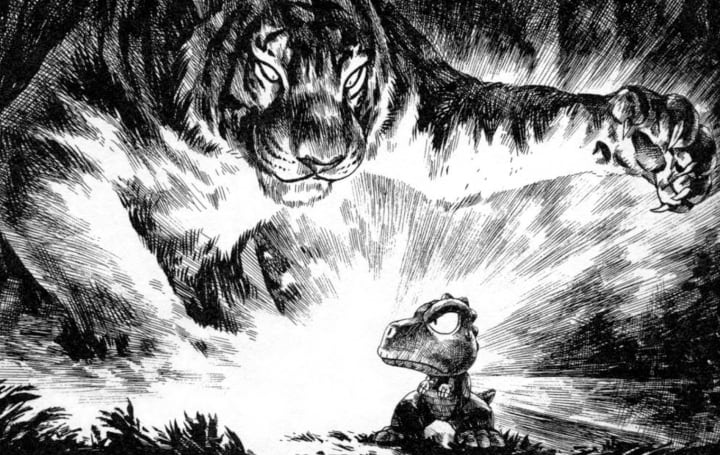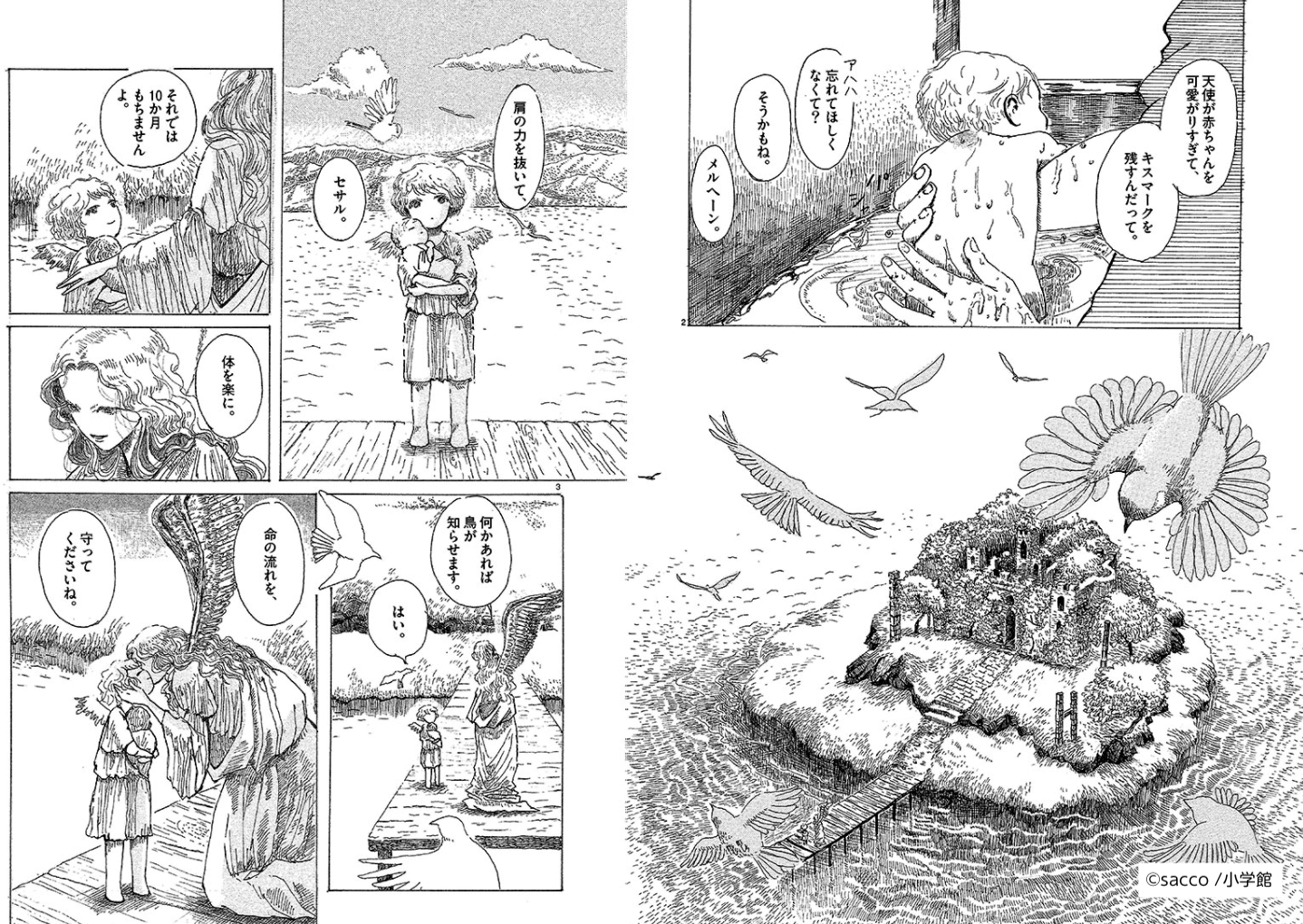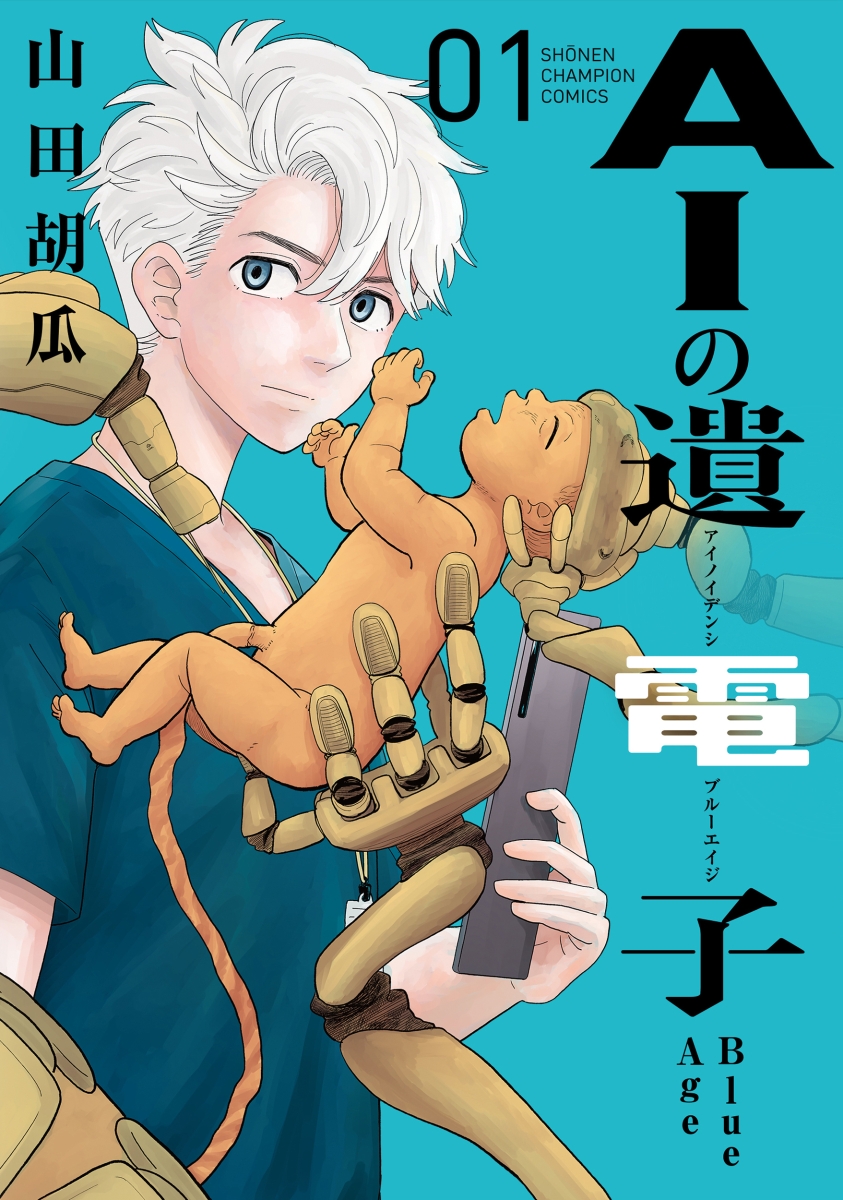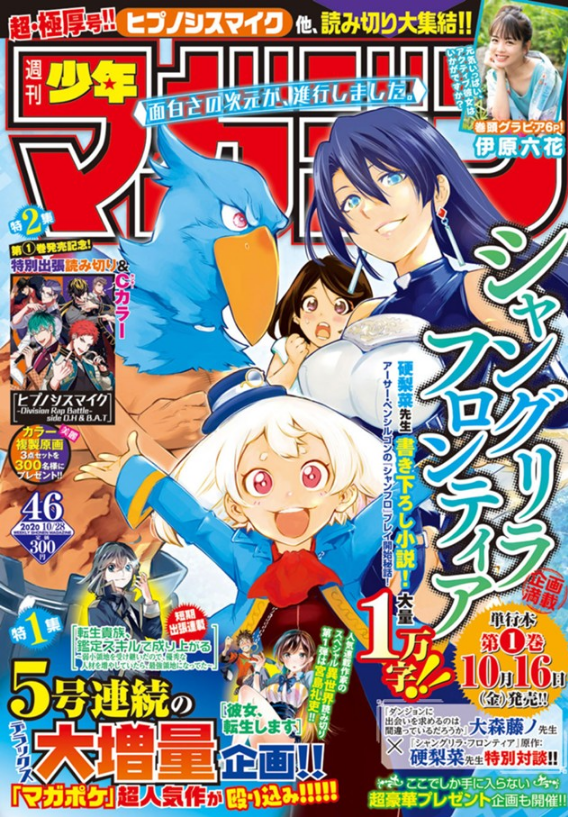Rokudou no Onnatachi is coming to conclusion with in a few days, It went through many stages during its run that started back in 2016. I hope to highlight here the start of its journey in Champion and hiccups and problems it faced.
Rokudou no Onnatachi began in issue 30 of 2016. It raised eyebrows with its quite quirky setting that involved delinquent girls falling in love with the Rokudou, a weak and bullied boy. This is caused by a strange onmyodo technique that Rokudou and his friends stumble onto in an attempt to relieve themselves of the bullying they suffer at school. This quirky mix of elements of romance comedy featuring intimidating girls was an interesting proposition for Champion readers at the time.
| Rokudou no Onnatachi 1 - Akita Shoten |
Journey on the Champion Road!
The journey of Rokudou in the magazine started with a rapid rise. It received an opening colour page on its 8th chapter and it was not willing to leave the upper placements of the table of contents after that. It had captivated the readers of Weekly Shonen Champion. This initial popularity of the series in the magazine excited the editorial department, which for the release of its first volume release gave it cover and opening colour page to celebrate. In addition the sales department also arranged a signing event.
| Rokudou on the Cover of WSC - Akita Shoten |
Rokudou no Onnatachi seemed to have met the sales expectations and it received reprints and showed sales growth. The big editorial push for the series continued for the first few volumes and this include gravure idol collab and a second cover all before it even reached its first anniversary. However, this push gradually faded. The popularity of the series seemed to have peaked and it struggled to raise sales past this initial peak. After that the series established itself in the middle pack of the magazine and it continued receiving attention but it was never to the same extent of the past. It reached a great number of 2.1 million copies in print with its latest volume, however, the editorial department might have felt it could have reached more.
| Rokudou Second and Last time on the cover of WSC. |
The story itself continued to be consistently good. Rokudou specifically grew significantly as a character becoming much stronger and earning the respects of people that previously bullied him. The girls which are the other main attraction of the series also had their own time to show off alongside Rokudou, especially the latter ones that were given larger arcs to show of their story.
The build up of the cast in these more longer arcs later on was quite interesting because they were more embedded into a wider narrative since each had their own purpose for the story to move forward, which the initial first one did not necessarily have. Nakamura was slowly building his manga brick by brick through these arcs by developing characters and moving the story forward. Another part that showcases this construction was his use of flower to reflect the main female characters characteristics was a great backdrop. In contrast to to that he also made references to buddhism through his villains which served the same purpose as the flowers to highlight personality traits. The series had a strong base and the building on top of it is good but it felt like it was building to something more and thats probably why its sudden ending feels like a let down.
| BEASTARS X Rokudou. Rokudou failed to achieve the same level of popularity as BEASTARS. |
Why Did it fail to Struck Gold?
In the interview between the Weekly Shonen Champion head editor Takekawa and Weekly Shonen Magazine Kurita. Rokudou no Onnatachi was brought up. Both talked about how Nakamura was able to create as previously highlighted a main character that draws the audience into to supporting him through his sheer will to move forward with his ideals. Takekawa agreed that this was an aspect that drew audiences in Champion to the manga and Kurita praised Nakamura for being able to create a main character with these characteristics.
 |
| Rokudou no Onnatachi - Nakamura Yuuji |
In the same conversation, Kurita also bought up a interesting topic regarding Nakamura's art, he pointed out that he might have had Nakamura only write the story and pass the artist duties to someone else. He felt like Nakamura was an author better fit for writing instead of drawing, and that his art was not quite right for the series. This was interesting because the art style of Rokudou has been described as perhaps a bit more aged and not quite appealing for modern audience and most japanese readers seem to point it out as the cause for the manga not breaking out into a hit. Nakamura does have a more rougher and old looking style but his art is not poor, in fact for me it makes him stand out. Though at the same time, a more polished and clean art style which seems to be the more modern option might have made the series more appealing to anyone on the fence about reading it.
Whatever Nakamura works on next, hopefully he can improve from his first work faults by reflecting on its fault and working on improving himself. He does not far to go and I believe he will excel with whatever he does next since he seems to be perfectly in tune with champion's audience.
Links -
WSC Takekawa x WSM Kurita
https://natalie.mu/comic/pp/weeklychamp02



